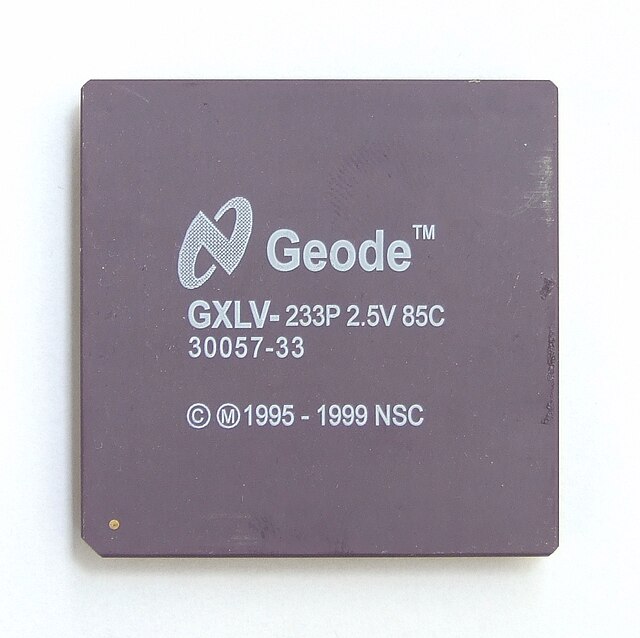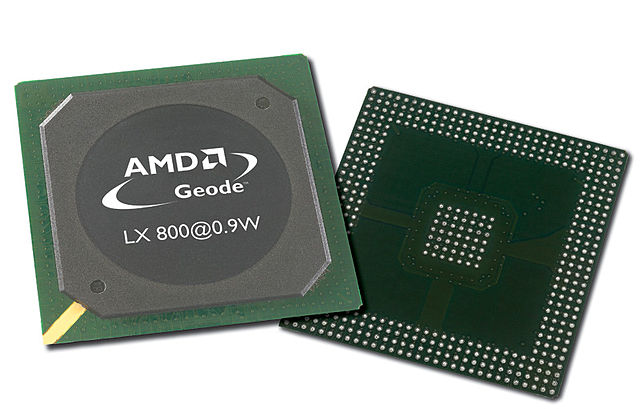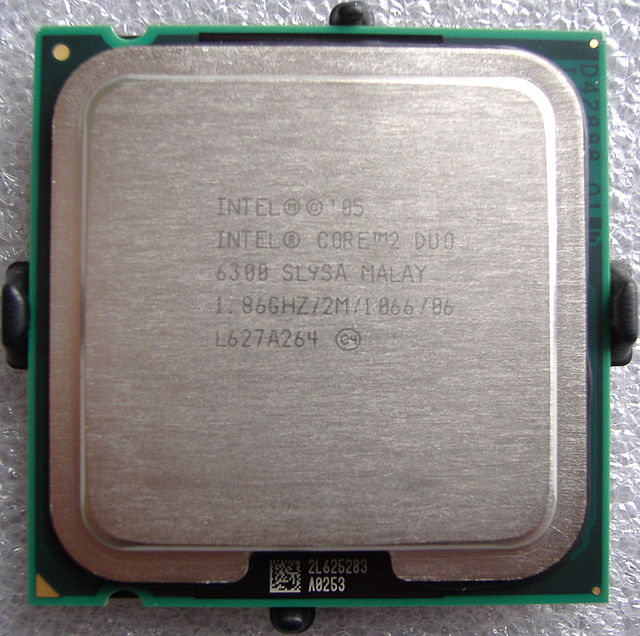Geode was a series of x86-compatible system-on-a-chip (SoC) microprocessors and I/O companions produced by AMD, targeted at the embedded computing market.
NSC Geode GXLV 233 MHz
National Semiconductor Geode GX1, 233 MHz
AMD Geode LX 800 (500 MHz, 0.9 W) processor.
Alix.1C Mini-ITX embedded board with AMD Geode LX 800 together with Compact Flash, miniPCI and PCI slots, 44-pin IDE interface and 256 MB RAM.
x86 is a family of complex instruction set computer (CISC) instruction set architectures initially developed by Intel based on the 8086 microprocessor and its 8088 variant. The 8086 was introduced in 1978 as a fully 16-bit extension of 8-bit Intel's 8080 microprocessor, with memory segmentation as a solution for addressing more memory than can be covered by a plain 16-bit address. The term "x86" came into being because the names of several successors to Intel's 8086 processor end in "86", including the 80186, 80286, 80386 and 80486. Colloquially, their names were "186", "286", "386" and "486".
The x86 architectures were based on the Intel 8086 microprocessor chip, initially released in 1978.
Intel Core 2 Duo, an example of an x86-compatible, 64-bit multicore processor
AMD Athlon (early version), a technically different but fully compatible x86 implementation
Am386, released by AMD in 1991








